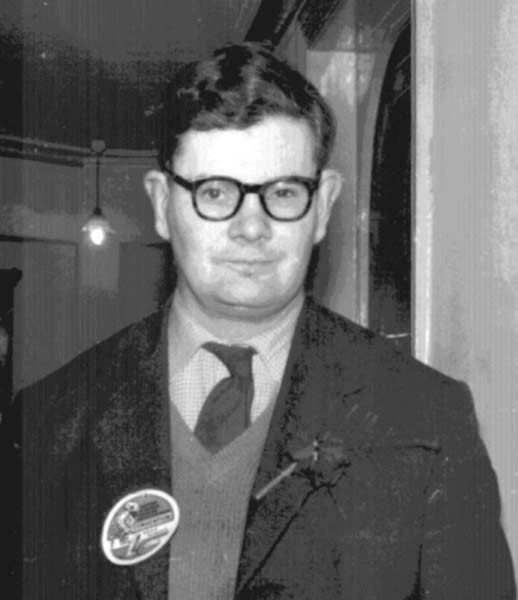[If you live in Southern California, you can see the Journey LIVE at Mysterious Galaxy Bookstore in San Diego, 2 p.m. on February 17!]

by Gideon Marcus
The latter half of January was filled with fanac (Fan Activity), and oh what a joy it was. The third weekend in January, the Journey once again attended ConDor, San Diego's SFF convention. And once again, we were guests, presenting on the state of current science fiction both Saturday and Sunday. It was a chance to meet up with old friends and make new ones. ConDor is always a fun event.

The highlight of that weekend, however, was a Saturday night trip up to San Juan Capistrano to watch Dick Dale and his Del-Tones perform. If you're not familiar with the King of the Surf Guitar by now, he is easily the most exciting instrumental musician these days. He puts on a hell of a show.

If the January's fanac was superlative, the February 1963 Analog, though beautifully illustrated by Schoenherr, was anything but. Not that the stories were bad, mind you. They just all had some significant flaw that kept them from being truly good.

Code Three, by Rick Raphael
For those not in the know, "Code Three" is police-speak for a high speed chase. It's an appropriate title for this Highway Patrol tale of the future, when North America is criss-crossed by mile-wide superhighways whose cars zoom at speeds of up to 400 miles per hour. Raphael writes in a lovingly technical fashion that is oddly compelling but gives short shrift to its three human characters, who are so much cardboard. I don't find Raphael's futuristic freeways particularly plausible, either, but they are fun to read about. Three stars.
Hilifter, by Gordon R. Dickson

This is five sixths of a great yarn about a futuristic spaceship hijacker, who relies on daring and ingenuity to pull off a caper against all odds. Dickson portrays his protagonist deftly and with subtlety, but the ending… hoo boy. I'm not sure if Dickson wrote the expositional fatuity for editor Campbell, of if the editor sliced the original ending to bits, but it is the mustache on the Mona Lisa. Three stars.
Something Will Turn Up, by David Mason

Stories with a lot of Beat jargon can often fall flat, but Mason does a good job of writing a poet/TV-repairman who pits forces against a hexed idiot box. Cute. Three stars.
"The Sound of Gasping", by Mel Sturgis

If you read (as I do) Aviation Week, then you're familiar with technical advertising. It's made with the slick standards of any Madison Avenue product, but the subject matter is abstruse engineering. Sturgis' piece is presumably on the growth and importance of technical advertising, as well as his experiences observing same at the recent convention, WestCon. But if you get anything out of this article, you're doing better than me. One star.
(The title is an obscure reference indeed — a riff on Isaac Asimov's article The Sound of Panting in the June 1955 Astounding (that being this magazine's name before it became Analog). The article was on the difficulty of keeping up with current technical literature.)
The Topper, by Arthur Porges

Cockroaches made sentient by radiation? It must be a joke… right? Well, probably. A bit of improbable fluff, just long enough to entertain rather than annoy. Three stars.
With No Strings Attached, by David Gordon (Randall Garrett)

A fellow markets an amazing new power source as a battery (it isn't, and you should know what it is right off) to prevent poaching and ensure exclusivity. I've been around long enough to recognize most of Randy Garrett's pseudonyms, so I cracked into "David Gordon's" latest with trepidation. Turns out Strings isn't bad (just devoid of women, like most Garrett stories). Three stars.
Space Viking (Part 4 of 4), by H. Beam Piper

This last installment of Piper's latest is arguably the best of the bunch. It contains the payoff of Prince Trask of Tanith's quest to forge a civilized empire out of the wreckage of the Old Federation. Though Trask started as a Space Viking, plundering half-civilized planets, by the end of the book, his league of planets has surpassed the feudal Sword Worlds whence he came and is a local power center.
As I've stated in prior reviews, the problem with Viking is its sketchiness. We hardly get to know any of the characters, interesting episodes are glossed over, giant spans of time are leaped without transition. This is an epic series of books compressed to a novel-length outline. I hope Piper gets a chance to expand on this genuinely interesting saga at some point, or perhaps open up his universe to collaborative efforts (has that ever been done before?)
As is, this is a four-star installment of a 3.25-star book.

Now it's time for the best part of the month, where we get to add up the numbers! Galaxy is a clear winner at 3.3 stars, followed by F&SF with 3.1. All of the other mags fell below the 3-star mark with Fantastic at 2.9, Analog at 2.8, Amazing at 2.4, and New Worlds at 2.3.
But all of the magazines, with the exception of New Worlds, had at least one four-star story. In fact, if you collected all the four and five-star stories, you could almost fill two magazines — twice as much material as last month.
Finally, women wrote 3.5 of 37 fiction pieces. Not a good showing, but again — better than last month.
Speaking of showings, next week I'll let you know if The Twilight Zone is worth watching in its new format (hint: so far, not so good…)
[P.S. If you registered for WorldCon this year, please consider nominating Galactic Journey for the "Best Fanzine" Hugo. Check your mail for instructions…]


































































